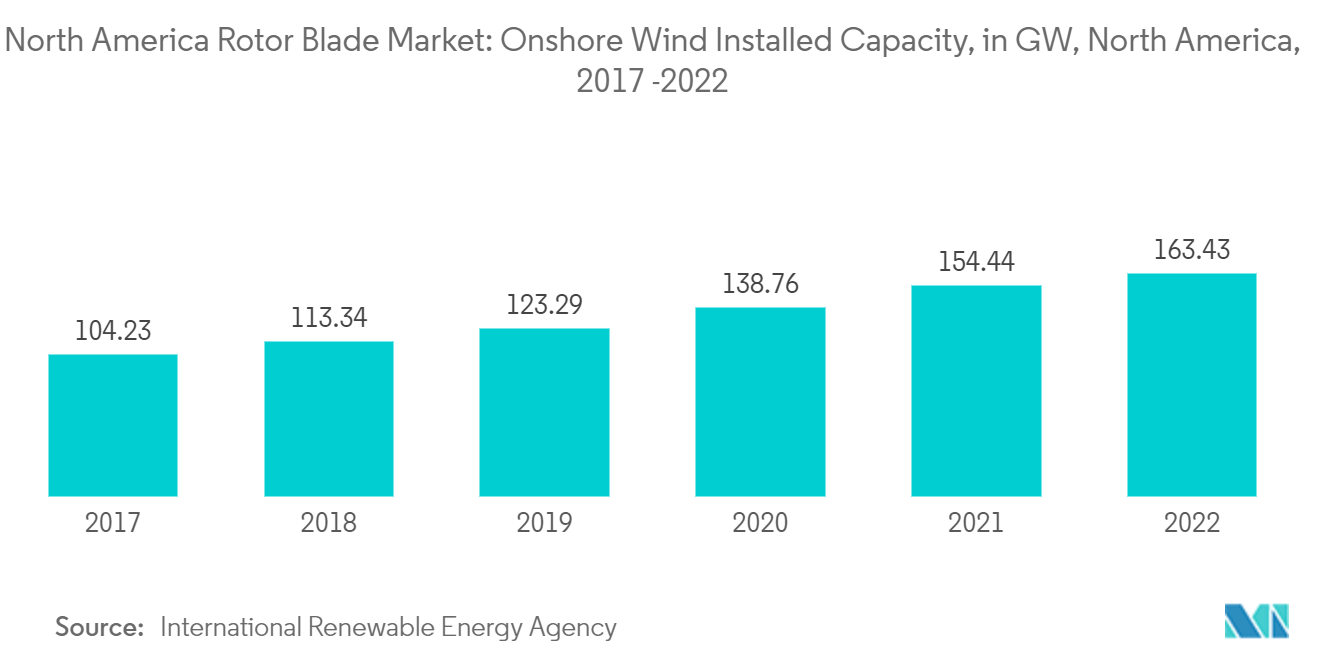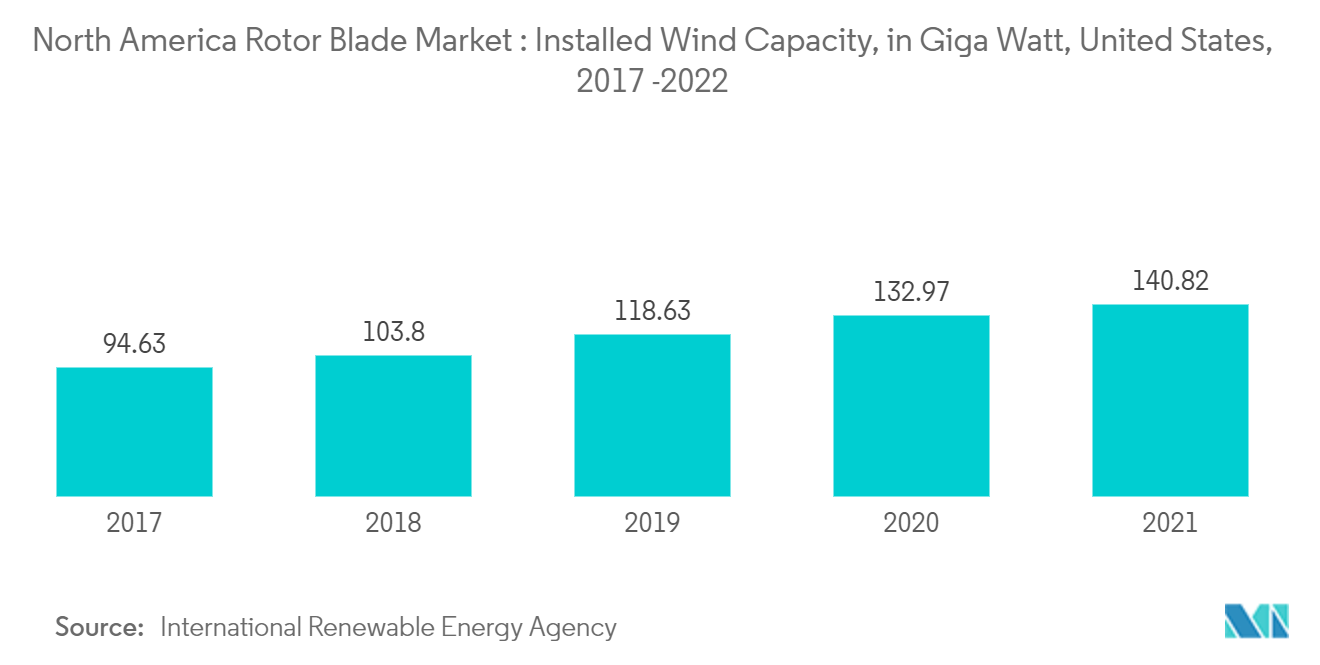Market Trends of North America Rotor Blade Industry
Onshore Segment to Dominate the Market
- Onshore wind energy power generation technology has evolved over the last five years to maximize electricity produced per megawatt capacity installed and to cover more sites with lower wind speeds. Besides this, in recent years, wind turbines have become larger with taller hub heights, broader diameters, and larger wind turbine blades.
- According to the International Renewable Energy Agency (IRENA), in 2022, the North American onshore wind turbine capacity additions registered to be 163.42 GW, an increase of around 5.9% as compared to 2021.
- Moreover, according to the International Energy Agency (IEA), the levelized cost of energy (LCOE) and global weighted average total CAPEX decreased from 76.1 USD/MWh and 1730.5 USD/MWh in 2016 to 48.2 USD/MWh and 1396.3 USD/MWh in 2021. In addition, the LCOE and average weighted CAPEX are expected to decrease to 44.6 USD/MWh and 1338.2 USD/MWh, respectively, by 2025.
- Canada holds North America's second-largest installed wind power capacity, with a total installed capacity of 15.29 GW in 2022. The country increased its installed wind power capacity by around 991 MW in 2021.
- As of 2021, Canada ranked eighth in the globe in terms of total onshore installed capacity, around 2% of the world's onshore wind capacity. According to the Canadian Renewable Energy Association (CREA), Canada has 317 wind energy projects producing power. Additionally, around 31 onshore and offshore wind power projects are planned for five years.
- In 2021, the share of wind energy in the total electricity generation in Canada amounted to 5.86%, which grew as compared to 4.21% in 2015. The development trends indicate not only the increasing investments in the wind sector but also that the size of wind farms is growing. The country is witnessing an increasing number of large wind farms with more than 1.5 MW capacity, such as the Grizzly Bear Creek Wind Project (152 MW) and Wild Rose 2 Wind Project (192 MW) under construction as of 2022. Large-size wind farms are expected to require taller and higher-capacity wind turbines. Hence, the demand for rotor blades is expected to increase during the forecast period
- Therefore, based on the above-mentioned factors, the onshore wind turbine rotor blade is expected to grow due to declining LCOE and reduced CAPEX, coupled with high energy demand through clean sources, during the forecast period.

United States to Dominate the Market
- Wind power generation in the United States has grown significantly in recent years. Advances in wind energy technology have decreased the cost of producing electricity from wind. Various Government regulations and financial incentives for renewable energy in the United States and other countries have contributed to growth in large-scale wind power generation.
- The large-scale wind power sector in the United States is receiving immense support from the government due to the America First policy, which aims to boost domestic energy production. The offshore wind power sector is considered a significant development area, as the country has a large coastal area for leasing.
- According to the International Renewable Energy Agency (IRENA), the wind energy market witnessed a significant rise in the total installed wind power capacity. In 2022, the United States wind turbine capacity additions was140.82 GW, an increase of around 5.9% compared to 2021.
- Furthermore, in December 2021, National Renewable Energy Laboratory (NREL) researchers conducted research on a combination of recyclable thermoplastics and additive manufacturing (better known as three-dimensional [3D] printing) to manufacture advanced wind turbine blades. The advance was made possible by funding from the US Department of Energy's Advanced Manufacturing Office-awards designed to stimulate technology innovation, improve the energy productivity of American manufacturing, and enable the manufacturing of cutting-edge products in the United States.
- In September 2022, the Biden-Harris Administration announced that the country's government was launching coordinated actions to develop new floating offshore wind platforms. The country's president, Joe Biden, set a target of deploying 30 gigawatts (GW) offshore wind by 2030.
- Hence, with the number of wind power projects planned and in the pipeline, majorly in offshore locations, the demand for wind turbine rotor blades is expected to increase during the forecast period.

